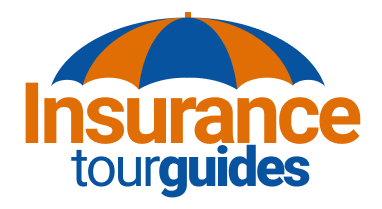Insurance is one of the most important financial tools for protecting yourself, your family, and your assets. Yet, many people fall for common myths that can lead to bad decisions, inadequate coverage, or unnecessary expenses. Don’t let misinformation cost you—learn the truth behind these widespread insurance myths so you can make smart, informed choices.
Myth #1: Red Cars Cost More to Insure
Many drivers believe that owning a red car means higher insurance premiums. In reality, color has no impact on your car insurance rates. Insurers determine premiums based on factors like:
- Make and model of your vehicle
- Age and driving history
- Annual mileage and location
- Safety features
So if you’re dreaming of a red sports car, don’t worry—its color won’t drive up your insurance costs.
Myth #2: Full Coverage Means Everything Is Covered
Many people assume that having “full coverage” means they’re protected against any possible event. In reality, “full coverage” typically includes:
- Liability insurance (covers damages to others if you’re at fault)
- Collision coverage (pays for repairs to your own vehicle after an accident)
- Comprehensive coverage (covers non-accident damage like theft, fire, or vandalism)
However, full coverage doesn’t cover everything. Things like mechanical breakdowns, regular maintenance, and personal belongings inside your car usually require separate coverage. Always check your policy details so you know what’s actually included.
Myth #3: Renters Don’t Need Insurance Because the Landlord’s Policy Covers Everything
Your landlord’s insurance covers the building, not your personal belongings. If there’s a fire, theft, or water damage, you’re responsible for replacing your own possessions unless you have renters insurance.
Renters insurance is affordable, often costing less than $20 per month, and can cover:
- Your personal belongings (furniture, electronics, clothing)
- Liability protection if someone is injured in your rental
- Additional living expenses if your rental becomes unlivable due to a covered event
Skipping renters insurance to save money could be a costly mistake.
Myth #4: Life Insurance Is Only for Older People
Many young people think they don’t need life insurance until they’re older, but buying coverage early has major advantages:
- Lower premiums – The younger and healthier you are, the cheaper your policy will be.
- Financial security for loved ones – If you have dependents, life insurance ensures they’re taken care of.
- Future insurability – If you develop health conditions later in life, you may struggle to get affordable coverage.
Even if you’re single with no dependents, a small life insurance policy can cover funeral costs and outstanding debts, preventing financial strain on your family.
Myth #5: Home Insurance Covers Flood and Earthquake Damage
Standard homeowners insurance does not cover flood or earthquake damage. You need separate policies for these disasters.
- Flood insurance is available through the National Flood Insurance Program (NFIP) or private insurers.
- Earthquake insurance is typically an add-on to your standard home policy.
If you live in a flood-prone or earthquake-prone area, skipping this extra coverage could leave you paying out of pocket for major damage.
Myth #6: Health Insurance Covers 100% of Medical Bills
Even with good health insurance, you’ll still have out-of-pocket costs like:
- Deductibles – The amount you pay before insurance kicks in.
- Copayments – Fixed fees for doctor visits or prescriptions.
- Coinsurance – A percentage of costs you share with your insurer after meeting your deductible.
Understanding your health plan’s costs and coverage limits can help you avoid surprises when you need medical care.
Myth #7: Your Credit Score Doesn’t Affect Insurance Rates
Many people don’t realize that credit history can impact insurance premiums. Insurers use credit-based insurance scores to predict risk, meaning lower credit scores often lead to higher premiums.
To keep insurance costs down:
- Pay bills on time
- Reduce credit card balances
- Check your credit report for errors
Good financial habits don’t just improve your credit score—they can also save you money on insurance.
Myth #8: If Someone Borrows Your Car, Their Insurance Pays for an Accident
Auto insurance follows the vehicle, not the driver. If you let a friend borrow your car and they cause an accident, your insurance policy is responsible for the damages.
Before lending your car, make sure:
- The person is a licensed and insured driver
- Your policy covers other drivers
- You understand any potential deductibles or exclusions
Being generous with your car could cost you if the borrower gets into an accident.
Myth #9: The Minimum Required Auto Insurance Is Enough
Every state sets minimum auto insurance requirements, but they’re often not enough to fully protect you. If you cause a major accident, basic liability coverage may not cover all damages, leaving you personally responsible for the rest.
Increasing your liability limits can provide better protection without dramatically increasing your premium. It’s a smart investment in your financial security.
Myth #10: Insurance Is a Waste of Money If You Never Use It
Some people believe insurance is pointless if they never file a claim, but insurance is about protection and peace of mind. A single accident, house fire, or medical emergency can cost thousands (or even millions) of dollars—far more than what you’ve paid in premiums.
Think of insurance like a safety net. You hope you never need it, but if disaster strikes, you’ll be grateful it’s there.
Final Thoughts
Misinformation about insurance can lead to costly mistakes and gaps in coverage. By understanding the facts, you can make smarter decisions, ensure you have the protection you need, and even save money in the process. Always read your policy details, compare options, and ask questions to ensure you’re getting the best coverage for your needs.

